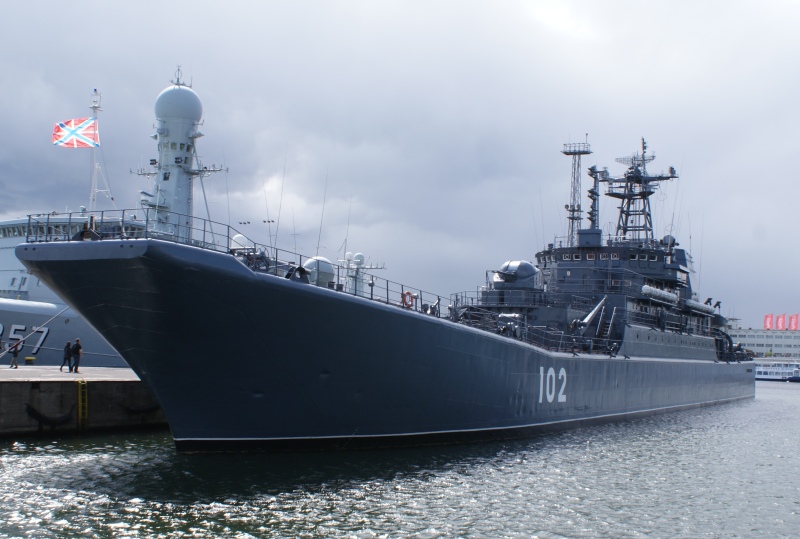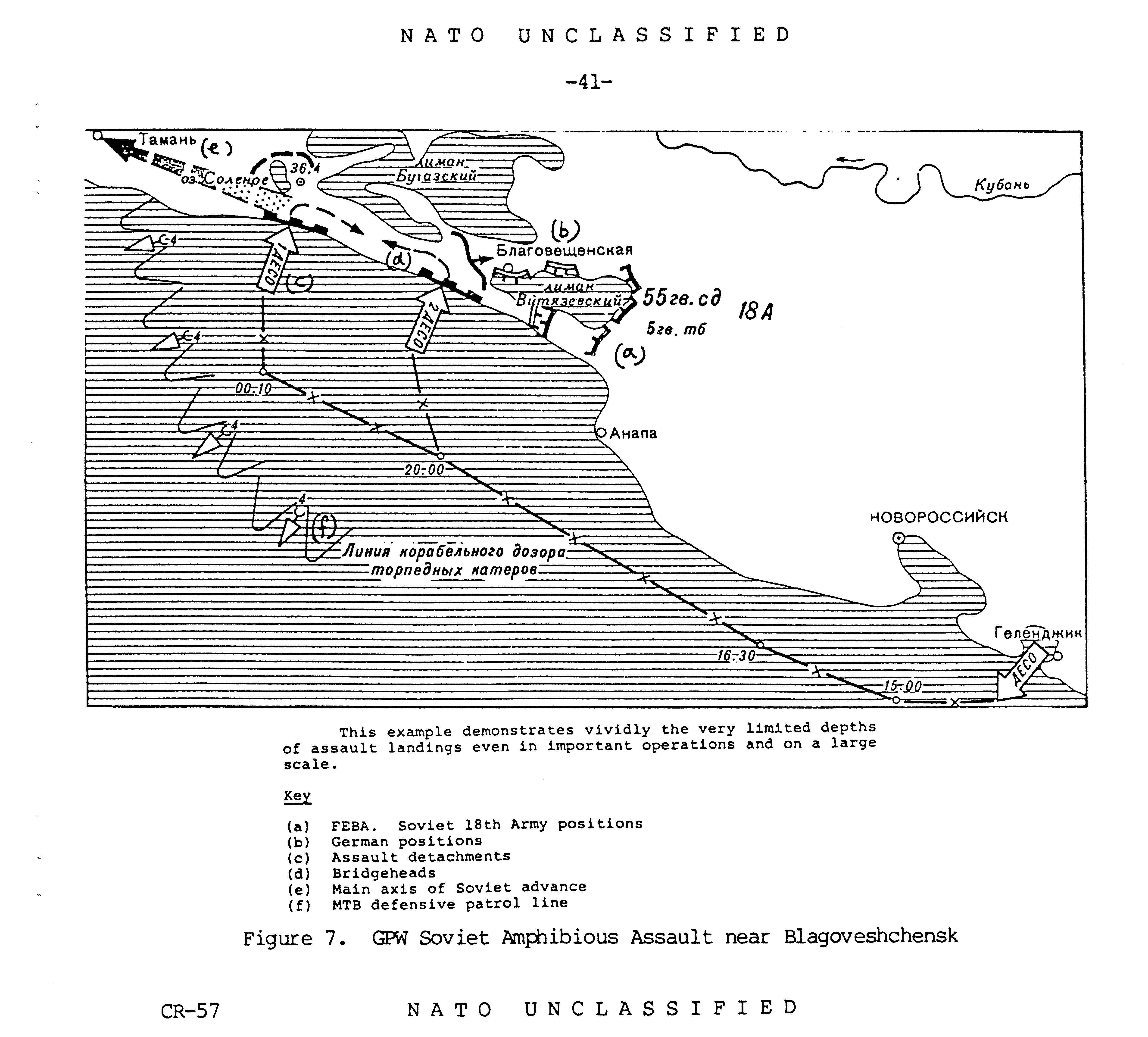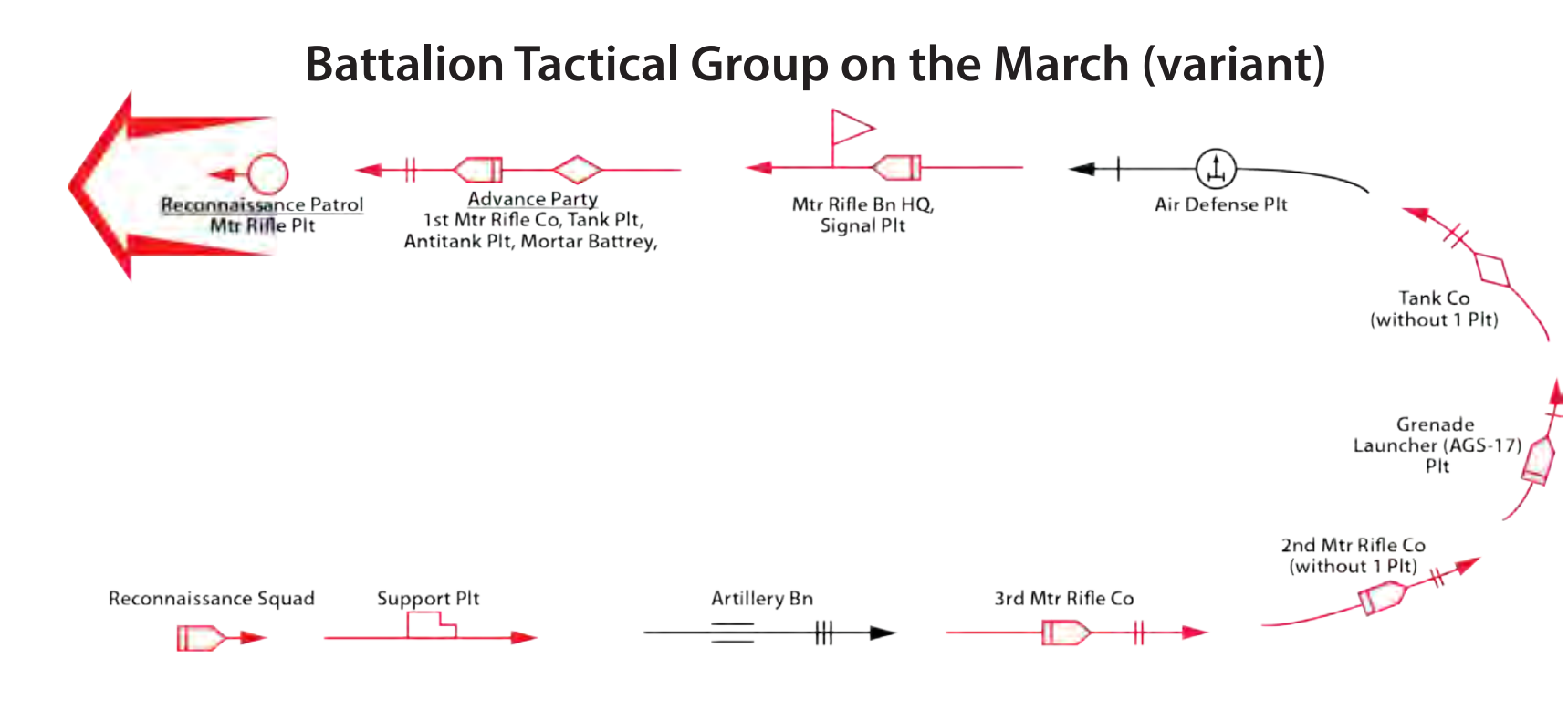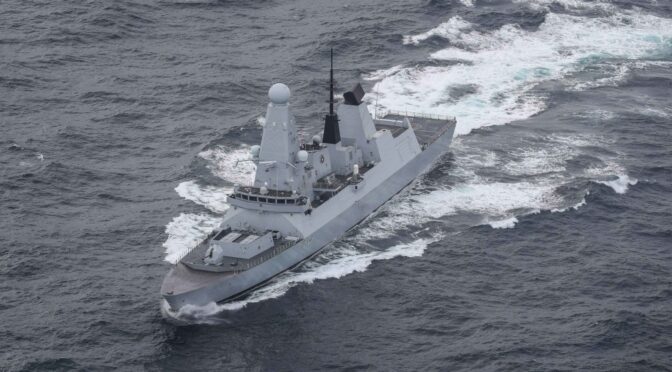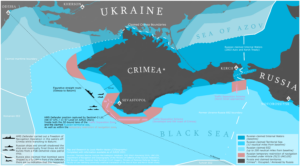Read Part One here.
By Michael Paul and Göran Swistek
Germany is heavily involved in issues related to the Arctic, from the consequences of climate change to maritime security and the preservation of the Arctic as an area of cooperation. However, the Arctic has lost its exceptional character as a place of peaceful cooperation and stability. In addition to Russia’s militarization, persistent territorial and resource disputes are now emerging in the Arctic and sub-Arctic region, most recently around the Svalbard archipelago administered by Norway.1
Geo-strategically, Germany lies at the interface between the High North, the Atlantic, the Baltic Sea, and the European mainland. Important maritime and land connections in terms of foreign trade and security policy run either through Germany or along its territory. As a member of the EU and the Council of the Baltic Sea States as well as an observer on the Arctic Council and the Barents Euro-Arctic Council, Berlin has numerous issues on its agenda relating to the Arctic. It has summarized these in the guidelines for German Arctic policy.2
From a security policy perspective, Germany’s interest in the region must be seen above all in the context of NATO. For this reason, the main area of operation for the German Navy and the focus for its future capability development will be related to NATO’s northern flank—the maritime space between the Arctic region, the GIUK gap, the North-Atlantic and the North Sea as well as the Baltic Sea region.3 The aim is to defend Europe against possible threats while keeping the main transport and connecting lines open. Part of the NATO context is also Germany’s function as a hub for Allied logistics. As the host country for Allied troop and materiel movements, the German armed forces have additional tasks in the areas of support, logistics, and security. German military airfields can also serve as bases for Allied aircraft, from helicopters to maritime patrol aircraft and jets. From Germany, they can reach most areas of operation, including the Arctic-North Atlantic region.
Germany depends on secure sea lines of communication and freedom of navigation. However, these are being called into question by the growing rivalry between the United States, China, and Russia, which is also taking effect in the High North. As potential peer competitors of NATO, China and Russia view their security policy and economic interests not in a regionally limited but in a broader geo-strategic context.
It is in Germany’s interest to counteract existing geopolitical tensions in the region and prevent conflicts of interest and potential crises in the Arctic in accordance with the guidelines of German Arctic policy. Ensuring freedom of navigation, Germany feels compelled to react to Russian activities and contain the potential for further destabilization.
The German Navy in the Arctic-North Atlantic Region
Against the backdrop of a possible arms race and escalation spiral, Germany must also fulfil its NATO obligations in the Arctic-North Atlantic region. The participation of the German Armed Forces in drills and exercises in the Arctic or sub-Arctic region should be understood as an expression of reliability to the Alliance, reassurance, and a signal of deterrence. On the land side, these exercises included the participation of the Very High Readiness Joint Task Force (VJTF) in the major NATO exercise Trident Juncture 2018 in northern Norway4 and the participation of the naval sea battalion in Arctic training with Dutch marines in 2019. The latter served to prepare a joint German-Dutch amphibious task group.
On the naval side, the sub-Arctic area in the North Atlantic and the northern Baltic Sea is one of the standard maritime areas in which the German Navy operates. It does so in standing NATO maritime task groups and in bilateral cooperation, especially with Norway. Within the framework of NATO’s Baltic Maritime Coordination Function (BMCF), the German Navy intends to assume responsibility for the entire Baltic Sea in the future. In the conceptual capstone paper of May 2021 for the German Armed Forces of the future, the Baltic Maritime Coordination Function was even listed as a priority in the reform project.5 The assumption of a geographical responsibility and coordination function for NATO by the armed forces of a member country outside of the NATO command and force structure is a security policy novelty in the Alliance. Poland and Germany have separately applied to take on the BMCF. After the inauguration of a new government in Germany in December 2021, Minister of Defense, Christine Lambrecht, has put all reform projects related to the capstone paper currently on hold. But the German application for the BCMF has already been passed to NATO for approval in autumn 2020.6 The decision about the function has been postponed several times, due to frictions about the content and details with Poland.
Against the background of the increased confrontation between NATO and Russia in the region, a closer coordination appears not just to be necessary in peace time, even more in times of crisis and conflict. Therefore, a permanent adaptation of NATO’s structural footprint in the region with more regional ownership would generate more flexibility and contribute to an enhanced deterrence posture as well as a required pre-condition if deterrence fails.
In the Baltic and the North Sea, Germany’s responsibility for the protection of its coastal waters, adjacent sea areas, and sea lanes is obvious. However, NATO’s northern flank consists not only of the sea area between Denmark and the Baltic, but also extends across the European North Sea to the North Pole. Due to Russia’s increased military activities, the security and resilience of the countries in this area must be increased. One of the simplest ways to increase both deterrence and defense capability is to have as complete a picture of the situation as possible. The aim is not only to identify aggressive behavior, but also to be able to prove it. By doing so, NATO could send a clear signal to Russia where the limits of destabilizing military activity in the region lie.
Germany’s Reconnaissance Problem
Knowledge about the activities, interrelationships, and developments in a security-relevant area makes it possible to move from a reactive to an active security policy. For this reason, it is essential to have an encompassing as possible picture of the situation in the area, preferably in real time. This requires certain key capabilities. It is precisely with these key capabilities for the High North, such as maritime reconnaissance, submarine hunting capabilities, and submarines, that Germany has repeatedly experienced difficulties. Of the German Navy’s former eight P-3 C Orion maritime reconnaissance aircraft, only four are still in operation.7 The overall availability of this aircraft type for operational purposes is assessed by around fifty percent.
Originally, this type of aircraft was not to be replaced until 2035 by the Franco-German Maritime Airborne Weapon System (MAWS) project. The regular use, wear, and the escalating costs of maintaining the P-3C Orion have led to the decision to withdraw the weapon system completely from service as early as 2025.8 Even now, the operational availability of this aircraft is often uncertain, so that the German Armed Forces may no longer be able to meet its operational obligations with this model. For this reason, Berlin has agreed on an interim solution (of an already available model in small numbers) to fulfil the tasks already stated in the context of Allied operations and permanent contributions in the medium term and to bridge the period until the MAWS is available.
In its last session before the summer break in 2021, the Budget Committee of the German Bundestag approved the acquisition of five P-8A Poseidon aircraft for 1.43 billion euros.9 This aircraft meets all the high technical and operational requirements currently placed on a maritime patrol aircraft. Norway has also opted for this model for reconnaissance in the High North.10
As an interim solution, the P-8A could remain in service with the German Armed Forces well beyond 2035 should the MAWS project be delayed or encounter problems. However, there are press reports that France is annoyed about Germany’s decision in favor of the P-8A interim solution and may therefore want to cancel the MAWS project.11
Operationally, the P-8A Poseidon can be deployed across the entire geographic spectrum of NATO territory or beyond. Technically, it is designed for both modern anti-submarine warfare and surface reconnaissance, and it should be compatible with most Allied systems without problems. In a more long term perspective, the F126 frigate with modern sensor technology for underwater distance detection will complement the German Navy’s anti-submarine capabilities.12 These, in turn, could make a significant contribution to the existing Standing NATO Maritime Groups (SNMGs) or a possible NATO Expanded Task Force (NETF) , which was tested during Trident Juncture 2018. The assumed area of operation of the NETF would be the Arctic-North Atlantic region. It would be flanked by NATO’s SNMGs in the Mediterranean and the Baltic and North Seas.
Given the availability, maintenance cycles, and concurrent mission loads of current German MPAs, the acquisition of five P8 aircraft appears only makeshift to meet requirements. A timely addition of another five models would provide the flexibility needed to augment contributions within the alliance.
Submarines and Cooperation with Norway
The best submarine hunter is still the submarine itself. With its sensor technology, it operates in the same medium as the unit to be searched for and can quickly penetrate the most diverse water layers, which influence sound transmission through temperature and salinity. At the same time, a searching submarine faces the same challenges as the submarine for which it is searching. It does not want to be discovered. Accordingly, it must incorporate the same tactical considerations, geography, and environmental influences as well as the limits of technical possibilities into its planning. The boundaries between hunter and hunted blur seamlessly. However, given the Alliance’s large geographical area of responsibility or the maritime space alone, from the Arctic to the North Atlantic, the North Sea and the Baltic, NATO has only a few operational submarines. The German Navy currently has six Type 212 submarines, which are ideally suited for deployment in the maritime regions of the High North due to their small size and quiet, hydrogen fuel cell propulsion. Most of the time, however, only half of the boats are ready for deployment.13 This is due to staffing problems in the German Armed Forces and technical difficulties, to include failures and planned maintenance.
It is foreseeable that the German Navy will receive new units of the type U212 CD (Common Design). This acquisition was also approved by the Budget Committee before the summer break.14 The U212 CD was developed jointly by Germany and Norway. The requirements of the German and Norwegian navies for their missions were taken into account.15 On the basis of a common list of requirements, the two countries have ordered six largely equal submarines from the Kiel shipyard ThyssenKrupp Marine Systems (TKMS). Four of them are to be delivered to Norway, two to Germany. The former type U212A’s high signature requirements are combined with greater range, speed and sea endurance. The boat can also defend itself with missiles against flying opponents. Thanks to the identical boats, interoperability between the navies of the two countries is to be improved. However, it is already becoming apparent that both the German and Norwegian special requests for equipment, armament and systems will in fact result in two different submarine types. In the period 2029-2035, they are expected to provide the Norwegian a smooth transformation from the former Ula-Class submarine to the new Type 212CD. The first boat is to be delivered to Norway in 2029. This is at least the first step in the effort to close or at least reduce military capability gaps.
European vs. Indo-Pacific Priorities
Against the backdrop of China’s power politics in the Indo-Pacific region, however, the United States is increasingly challenged outside Europe and its periphery, although the U.S. Navy has strengthened its presence in the North Atlantic, reactivating U.S. Second Fleet in July 2018 to do so. However, many of the U.S. Navy’s specialized capabilities will be deployed in areas where a confrontation with China can no longer be ruled out. The Chairman of the Joint Chiefs of Staff, General Mark A. Milley, has stated that the Arctic may well have a significant geo-strategic role for the United States in the future. At present, however, he said, there are other priorities in terms of capabilities and their funding. The escalation dynamics in the Indo-Pacific are assessed as more pressing.16 No reduction or shift of American capabilities in the North Atlantic has yet been observed. Nevertheless, this remains an option for action by U.S. forces in the event that the situation in the Indo-Pacific intensifies.
It is in Germany’s interest for the United States to face up to the challenges in the Indo-Pacific. However, Washington has a legitimate expectation that European countries will address the immediate challenges to Europe’s security, including in the High North, more independently and credibly. Beyond command and control or coordination tasks, this requires strengthening military capabilities, increasing readiness, closing specific capability gaps, and making more appropriate deployments available. All of this feeds directly into any defense planning and deterrence maintenance by NATO. Germany still has considerable deficits here. While Germany is often highlighted as a likeminded security ally, in a recent study, none of the four Nordic states—Danish, Finnish, Norwegian and Swedish—identified Germany as the key European security and defense partner.17
Germany will therefore have to make a far more substantial contribution to the effectiveness of European diplomacy and the Alliance’s defense capabilities in the Arctic-North Atlantic region. To this end, the capabilities of the German Armed Forces and the German Navy must be further improved. Berlin must be made fit for a cold response.
Dr. Michael Paul is a Senior Fellow in the International Security Division of the German Institute for International and Security Affairs (SWP) in Berlin and Project Director of SWP´s Armed Forces Dialogue (in cooperation with the German Ministry of Defence) and SWPs Maritime Security Dialogue. He has published extensively about the Arctic region, Asia-Pacific, China, Russia, arms control, international security, maritime security, and nuclear strategy; i.a. with Göran Swistek, Russia in the Arctic. Development Plans, Military Capability, and Crises Prevention (Berlin: SWP, 2021) and most recently a book about the Arctic, Climate Change and Geopolitics (Der Kampf um den Nordpol. Die Arktis, der Klimawandel und die Geopolitik der Großmächte, Freiburg: Verlag Herder, 2022). Recent publications: https://www.swp-berlin.org/en/researcher/michael-paul.
Commander Goeran Swistek, German Navy, is a Visiting Fellow in the International Security Division of the German Institute for International and Security Affairs (SWP). He was previously advisor to the Chief and Deputy Chief of the German Navy and Assistant Chief of Staff N3 (Current Operations) on the German Maritime Forces Staff (DEU MARFOR). He holds a master’s degree in International Security Studies. His areas of expertise include the German Armed Forces, International Security and Defense Policy, Maritime Forces and Navies, Maritime Security, NATO and Defense Planning, and Security Policy in the Baltic Sea Region. Recent publications: https://www.swp-berlin.org/en/researcher/goeran-swistek.
References
[1] Nilsen, Thomas, “Russia complains of Norwegian navy’s visit to Svalbard,” Arctic Today, 2021, https://www.arctictoday.com/russia-complains-of-norwegian-navys-visit-to-svalbard/?wallit_nosession=1.
[2] Federal German Government, Policy Guidelines for the Arctic, https://www.auswaertiges-amt.de/blob/2239806/0c93a2823fcff8ce9f6bce5b6c87c171/190821-arktisleitlinien-download-data.pdf.
[3] See also: Kaack, Jan Christian, Chief of German Navy, Absicht 2022 (Intent 2022), https://www.bundeswehr.de/resource/blob/5401072/14996debd14ed899282a9eb239b508d6/inspm-absicht-2022-data.pdf.
[4] Wiegold, Thomas, Trident Juncture: Es geht nicht nur um den Kampf um die Brücke von Telneset – Augen geradeaus!, https://augengeradeaus.net/2018/10/trident-juncture-es-geht-nicht-nur-um-den-kampf-um-die-bruecke-von-telneset.
[5] German Ministry of Defence, BMVg, Eckpunkte für die Bundeswehr der Zukunft, Berlin: BMVg, 18 May 2021, S. 12, https://www.bundeswehr.de/resource/blob/5092728/7059f0f9af27786b4eac7118e0c5ca23/eckpunkte-final-data.pdf.
[6] Swistek, Goeran, Abschreckung und Verteidigung im Ostseeraum, Berlin: SWP, 15 December 2020 (SWP-Aktuell 2020/A 100), https://www.swp-berlin.org/10.18449/2020A100/.
[7] Deutscher Bundestag, Drucksache 19/28697, https://dserver.bundestag.de/btd/19/286/1928697.pdf.
[8] Wiegold, Thomas, “Chancen der Marine auf P-8 Poseidon als neuer Seefernaufklärer steigen,” 2021, https://augengeradeaus.net/2021/05/chancen-der-marine-auf-p-8-poseidon-als-neuer-seefernaufklaerer-steigen/comment-page-1/.
[9] Wiegold, Thomas, “Bundestag gibt fast 20 Mrd Euro für Rüstungsprojekte frei – Auflagen unter anderem für FCAS und Puma-Schützenpanzer,” Augen geradeaus!, 23 June 2021, https://augengeradeaus.net/2021/06/bundestag-gibt-fast-20-mrd-euro-fuer-ruestungsprojekte-frei-auflagen-unter-anderem-fuer-fcas-und-puma-schuetzenpanzer/.
[10] Nilsen, Thomas, “Norway’s new ‘eyes and ears’ in the north performs maiden flight,” The Barents Observer, https://thebarentsobserver.com/en/security/2021/08/norways-new-eyes-and-ears-north-performs-maiden-flight.
[11] Otto, Adelbert, La Tribune sagt, Paris wird das deutsch-französische MAWS-Verteidigungsprogramm aufgeben (‚Paris will abandon the MAWS project), Technik-Smartphone-News, 11 July 2021, https://www.technik-smartphone-news.de/la-tribune-sagt-paris-wird-das-deutsch-franzoesische-maws-verteidigungsprogramm-aufgeben/.
[12] Publication of the German Parliament, Deutscher Bundestag, Drucksache 19/28697, https://dserver.bundestag.de/btd/19/286/1928697.pdf.
[13] Wiegold, Thomas, Kein einziges deutsches U-Boot fährt mehr, 2017, https://augengeradeaus.net/2017/10/kein-einziges-deutsches-u-boot-faehrt-mehr/.
[14] Wiegold, Thomas, Bundestag gibt fast 20 Mrd Euro für Rüstungsprojekte frei – Auflagen unter anderem für FCAS und Puma-Schützenpanzer, Augen geradeaus!, 23 June 2021, https://augengeradeaus.net/2021/06/bundestag-gibt-fast-20-mrd-euro-fuer-ruestungsprojekte-frei-auflagen-unter-anderem-fuer-fcas-und-puma-schuetzenpanzer/.
[15] Bredick, Marcus, Startschuss für U 212 CD, Marineforum, 23 March 2021, https://marineforum.online/startschuss-fuer-u-212-cd/.
[16] Everstine, Bryan W., “DOD Leaders Want More Arctic Funding, But Not Right Now,” Air Force Magazine, 2021, www.airforcemag.com/dod-leaders-increased-arctic-funding-not-right-now/.
[17] Kristin Haugevik et al, Nordic partnership choices in a fierier security environment: Towards more alignment, 2012, https://www.nupi.no/en/Publications/CRIStin-Pub/Nordic-partnership-choices-in-a-fierier-security-environment-Towards-more-alignment.
Featured image: NORTH ATLANTIC OCEAN (April 14, 2022) The German Sachsen-class air-defense frigate FGS Sachsen (F 219) transits the North Atlantic Ocean in support of exercise Northern Viking 22. (Courtesy photo by German Navy)




